Morning Rundown: Congress returns with shutdown looming, manhunt underway for highway mass shooter, and an action-packed first NFL weekend

'Star Trek's' interracial kiss 50 years ago boldly went where none had gone before
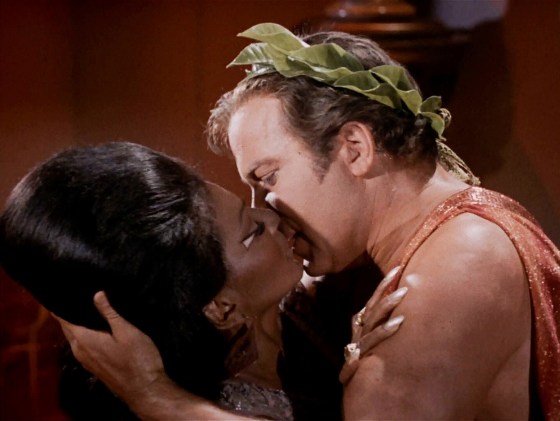
WASHINGTON — It was the kiss heard around the galaxy.
Fifty years ago — and only one year after the U.S. Supreme Court declared interracial marriage was legal — two of science fiction's most enduring characters, Capt. James T. Kirk and Lt. Nyota Uhura, kissed each other on "Star Trek."
It wasn't romantic. Sadistic, humanlike aliens forced the dashing white captain to lock lips with the beautiful black communications officer. But the kiss between actors William Shatner and Nichelle Nichols in "Plato's Stepchildren" would help change attitudes in America about what was allowed to be shown on TV and made an early statement about the coming acceptance of interracial relationships in a United States still struggling with racism and civil rights.
The kiss between Uhura and Kirk "suggested that there was a future where these issues were not such a big deal," said Eric Deggans, national television critic for National Public Radio. "The characters themselves were not freaking out because a black woman was kissing a white man. ... In this utopian-like future, we solved this issue. We're beyond it. That was a wonderful message to send."
"Plato's Stepchildren," which first aired on Nov. 22, 1968, came before Star Trek morphed into a cultural phenomenon. The show's producers, meanwhile, were concerned about one of the main episode elements: Humanlike aliens dressed as ancient Greeks that torture the crew with their telekinetic powers and force the two USS Enterprise crew members to kiss.
Worried about reaction from Southern television stations, showrunners filmed the kiss between Shatner and Nichols — their lips are mostly obscured by the back of Nichols' head — and wanted to film a second where it happened off-screen. But Nichols said in her book, "Beyond Uhura: Star Trek and Other Memories," that she and Shatner deliberately flubbed lines to force the original take to be used.
Despite concerns from executives, "Plato's Stepchildren" aired without blowback. In fact, it got the most "fan mail that Paramount had ever gotten on Star Trek for one episode," Nichols said in a 2010 interview with the Archive of American Television.
Officials at Paramount, the show's producer, "were just simply amazed and people have talked about it ever since," said Nichols.
While inside the show things were buzzing, the episode passed by the general public and the TV industry at that time almost without comment, said Robert Thompson, a Syracuse University professor of television and popular culture.

NBC OUT 'Star Trek' star George Takei says sci-fi can be 'a trailblazer' for social change
"It neither got the backlash one might have expected nor did it open the doors for lots more shows to do this," Thompson said. "The shot heard around the world started the American Revolution. The kiss heard around the world eventually did ... but not immediately."
This was a world where interracial marriage had just become legal nationwide.
In 1967, the year before "Plato's Stepchildren" aired, the Supreme Court struck down nationwide laws that made marriage illegal between blacks and whites, between whites and Native Americans, Filipinos, Asians and, in some states, "all non-whites
Only 3 percent of newlyweds were intermarried that year. In 2015, 17 percent of newlyweds — or at least 1 in 6 of newly-married people — were intermarried, according to a Pew Research Center analysis of U.S. Census Bureau data.
Most television — outside of the news — was escapist fare and not willing to deal with the raucous atmosphere in the 1960s, Thompson said.
"It was so hard for television in the 60s to talk about the 1960s," he said. "That kiss and that episode of Star Trek is an example of how every now and again television in that period tried to kick the door open to those kinds of representations."
Gene Roddenberry, Star Trek's creator, and his team had more leeway because he was writing about the future and not current life, experts said.
"Setting Star Trek three hundred years in the future allowed (Roddenberry) to focus on the social issues of the 1960s without being direct or obvious," Shatner said in his book "Leonard: My Fifty-Year Friendship with a Remarkable Man."
A later episode entitled "Let That Be Your Last Battlefield" highlighted the folly of racism by showing a generations-long battle between two people from the same planet who thought each other to be subhuman — one was black-skinned on the left side and white on the right, while the other was the opposite.
Throughout the ensuing decades, interracial relationships with black and white actors became more prevalent on television, spanning multiple genres. From comedies like "The Jeffersons" and "Happy Endings," to dramas such as "Parenthood," ''Six Feet Under" and "Dynasty," and back to sci-fi with the short-lived "Firefly."
The trend is still not without its detractors. In 2013, a Cheerios commercial featuring an interracial couple and their daughter drew thousands of racist comments online.
Historians have noted that interracial kisses between blacks and whites happened on British television during live plays as early as 1959, and on subsequent soap operas like "Emergency Ward 10."
In the U.S., interethnic kisses happened on "I Love Lucy" between the Cuban Desi Arnaz and the white Lucille Ball in the 1950s and even on Star Trek in 1967 with Mexican actor Ricardo Montalban kissing Madlyn Rhue in the "Space Seed" episode.
Other shows like "Adventures in Paradise" and "I Spy" featured kisses between white male actors and Asian actresses, and Sammy Davis Jr. kissed Nancy Sinatra on the cheek on a December 1967 episode of her televised special "Movin' with Nancy."
Whether another kiss came first doesn't really matter.
"For whatever reason, that one between Captain Kirk and Lieutenant Uhura seems to be the one that is marked as the milestone," Thompson said.
It stands out because it had a profound effect on viewers, Nichols said in 2010.
"The first thing people want to talk about is the first interracial kiss and what it did for them. And they thought of the world differently, they thought of people differently," she said.
ARTS & CULTURE
Fifty years ago, “star trek” aired tv’s first interracial kiss.
For actress Nichelle Nichols, the first black woman to have a continuing co-starring role on TV, it was the beginning of a lifelong career in activism
Matthew Delmont, The Conversation
/https://tf-cmsv2-smithsonianmag-media.s3.amazonaws.com/filer/d0/01/d001c71f-4d7f-47f7-b7e7-12638a41e663/first_interracial_kiss_on_tv.jpg)
On Nov. 22, 1968, an episode of “Star Trek” titled “ Plato’s Stepchildren ” broadcast the first interracial kiss on American television.
The episode’s plot is bizarre: Aliens who worship the Greek philosopher Plato use telekinetic powers to force the Enterprise crew to sing, dance and kiss. At one point, the aliens compel Lieutenant Uhura (Nichelle Nichols) and Captain Kirk (William Shatner) to embrace. Each character tries to resist, but eventually Kirk tilts Uhura back and the two kiss as the aliens lasciviously look on.
The smooch is not a romantic one. But in 1968 to show a black woman kissing a white man was a daring move.
The episode aired just one year after the U.S. Supreme Court’s Loving v. Virginia decision struck down state laws against interracial marriage. At the time, Gallup polls showed that fewer than 20 percent of Americans approved of such relationships .
As a historian of civil rights and media, I’ve been fascinated by the woman at the center of this landmark television moment. Casting Nichelle Nichols as Lieutenant Uhura created possibilities for more creative and socially relevant “Star Trek” storylines.
But just as significant is Nichols’s off-screen activism. She leveraged her role on “Star Trek” to become a recruiter for NASA, where she pushed for change in the space program. Her career arc shows how diverse casting on the screen can have a profound impact in the real world, too.
‘A triumph of modern-day TV’
In 1966, “Star Trek” creator Gene Rodenberry decided to cast Nichelle Nichols to play Lieutenant Uhura, a translator and communications officer from the United States of Africa. In doing so, he made Nichols the first African-American woman to have a continuing co-starring role on television.
The African-American press was quick to heap praise on Nichols’s pioneering role.
The Norfolk Journal and Guide hoped that it would “broaden her race’s foothold on the tube.”
The magazine Ebony featured Nichols on its January 1967 cover and described Uhura as “the first Negro astronaut, a triumph of modern-day TV over modern-day NASA.”
Yet the famous kiss between Uhura and Kirk almost never happened.
After the first season of “Star Trek” concluded in 1967, Nichols considered quitting after being offered a role on Broadway. She had started her career as a singer in New York and always dreamed of returning to the Big Apple.
But at a NAACP fundraiser in Los Angeles, she ran into Martin Luther King Jr.
Nichols would later recount their interaction.
“You must not leave,” King told her . “You have opened a door that must not be allowed to close…you changed the face of television forever…For the first time, the world sees us as we should be seen, as equals, as intelligent people.”
King went on to say that he and his family were fans of the show; she was a “hero” to his children.
With King’s encouragement, Nichols stayed on “Star Trek” for the original series’ full three-year run.
Nichols’ controversial kiss took place at the end of the third season. Nichols recalled that NBC executives closely monitored the filming because they were nervous about how Southern television stations and viewers would react.

After the episode aired, the network did receive an outpouring of letters from viewers – and the majority were positive .
In 1982, Nichols would tell the Baltimore Afro-American that she was amused by the amount of attention the kiss generated, especially because her own heritage was “a blend of races that includes Egyptian, Ethiopian, Moor, Spanish, Welsh, Cherokee Indian and a ‘blond blue-eyed ancestor or two.’”
Space crusader
But Nichols’s legacy would be defined by far more than a kiss.
After NBC canceled Star Trek in 1969, Nichols took minor acting roles on two television series, “ Insight ” and “ The D.A. ” She would also play a madame in the 1974 blaxploitation film “ Truck Turner .”
She also started to dabble in activism and education. In 1975, Nichols established Women in Motion, Inc. and won several government contracts to produce educational programs related to space and science. By 1977, she had been appointed to the board of directors of the National Space Institute , a civil space advocacy organization.
That year she gave a speech at the institute’s annual meeting, “New Opportunities for the Humanization of Space, or Space: What’s in it for Me?” In it, she critiqued the lack of women and minorities in the astronaut corps, challenging NASA to “come down from your ivory tower of intellectual pursuit, because the next Einstein might have a Black face – and she’s female.”
Several of NASA’s top administrators were in the audience. They invited her to lead an astronaut recruitment program for the new space shuttle program. Soon, she packed her bags and began traveling the country, visiting high schools and colleges, speaking with professional organizations and legislators, and appearing on national television programs such as “Good Morning America.”
“The aim was to find qualified people among women and minorities, then to convince them that the opportunity was real and that it also was a duty, because this was historic,” Nichols told the Baltimore Afro-American in 1979. “I really had this sense of purpose about it myself.”
In her 1994 autobiography, “ Beyond Uhura ,” Nichols recalled that in the seven months before the recruitment program began, “NASA had received only 1,600 applications, including fewer than 100 from women and 35 from minority candidates.” But by the end of June 1977, “just four months after we assumed our task, 8,400 applications were in, including 1,649 from women (a 15-fold increase) and an astounding 1,000 from minorities.”
Nichols’s campaign recruited several trailblazing astronauts, including Sally Ride, the first American woman in space, Guion Bluford, the first African-American in space, and Mae Jemison, the first African-American woman in space.
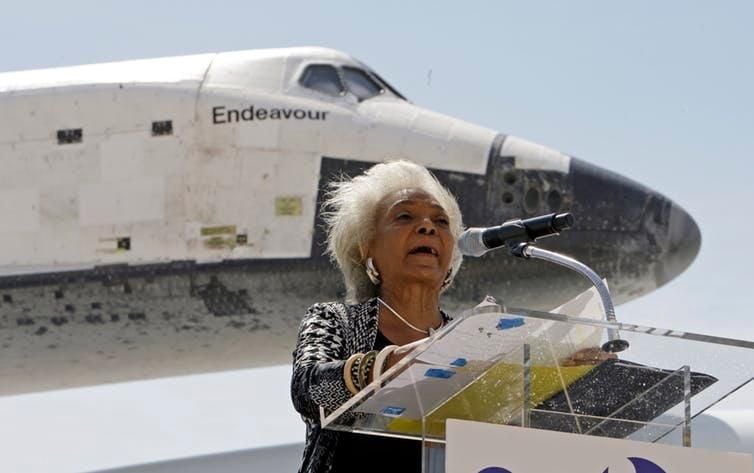
Relentless advocacy for inclusion
Her advocacy for inclusion and diversity wasn’t limited to the space program.
As one of the first black women in a major television role, Nichols understood the importance of opening doors for minorities and women in entertainment.
Nichols continued to push for African-Americans to have more power in film and television.
“Until we Blacks and minorities become not only the producers, writers and directors, but the buyers and distributors, we’re not going to change anything,” she told Ebony in 1985 . “Until we become industry, until we control media or at least have enough say, we will always be the chauffeurs and tap dancers.”
It’s an issue that, unfortunately, remains relevant today. In February of this year, UCLA’s annual Hollywood Diversity Report found that women and people of color continue to be underrepresented as directors and in studio board rooms. It concluded that “Hollywood studios are leaving money on the table by not developing films and TV shows with more diverse casts.”
Fifty years ago, Nichols’s kiss may have broken an important cultural barrier. But as Nichols well knows, the quest to secure opportunities for women and minorities persists to this day – an effort that requires relentless pressure.
The Conversation's new podcast “ Heat and Light ” features Professor Delmont discussing this story in depth .
Matthew Delmont, Professor of History, Arizona State University
Get the latest Travel & Culture stories in your inbox.
The Story Behind 'Star Trek' Actress Nichelle Nichols' Iconic Interracial Kiss
The smooch was not a romantic one. but, in 1968, to show a black woman kissing a white man was a daring move., the conversation, published aug. 2, 2022.
This article originally appeared on The Conversation .
This article is republished here with permission from The Conversation . This content is shared here because the topic may interest Snopes readers; it does not, however, represent the work of Snopes fact-checkers or editors.
On a 1968 episode of “Star Trek,” Nichelle Nichols , playing Lt. Uhura, locked lips with William Shatner’s Capt. Kirk in what’s widely thought to be first kiss between a Black woman and white man on American television.
The episode’s plot is bizarre: Aliens who worship the Greek philosopher Plato use telekinetic powers to force the Enterprise crew to sing, dance and kiss. At one point, the aliens compel Lt. Uhura and Capt. Kirk to embrace. Each character tries to resist, but eventually Kirk tilts Uhura back and the two kiss as the aliens lasciviously look on.
The smooch is not a romantic one. But in 1968 to show a Black woman kissing a white man was a daring move. The episode aired just one year after the U.S. Supreme Court’s Loving v. Virginia decision struck down state laws against interracial marriage. At the time, Gallup polls showed that fewer than 20% of Americans approved of such relationships .
As a historian of civil rights and media , I’ve been fascinated by the woman at the center of this landmark television moment. Casting Nichols, who died on July 30, 2022, created possibilities for more creative and socially relevant “Star Trek” storylines .
But just as significant is Nichols’ off-screen activism. She leveraged her role on “ Star Trek ” to become a recruiter for NASA, where she pushed for change in the space program. Her career arc shows how diverse casting on the screen can have a profound impact in the real world, too.
‘A Triumph of Modern-Day TV’
In 1966, “Star Trek” creator Gene Rodenberry decided to cast Nichols to play Lt. Uhura, a translator and communications officer from the United States of Africa. In doing so, he made Nichols the first Black woman to have a continuing co-starring role on television.
The Black press was quick to heap praise on Nichols’ pioneering role.
The Norfolk Journal and Guide hoped that it would “broaden her race’s foothold on the tube.”
The magazine Ebony featured Nichols on its January 1967 cover and described Uhura as “the first Negro astronaut, a triumph of modern-day TV over modern-day NASA.”
Yet the famous kiss between Uhura and Kirk almost never happened.
After the first season of “Star Trek” concluded in 1967, Nichols considered quitting after being offered a role on Broadway. She had started her career as a singer in New York and always dreamed of returning to the Big Apple.
But at an NAACP fundraiser in Los Angeles, she ran into Martin Luther King Jr.
Nichols would later recount their interaction.
“You must not leave,” King told her . “You have opened a door that must not be allowed to close … you changed the face of television forever. … For the first time, the world sees us as we should be seen, as equals, as intelligent people.”
King went on to say that he and his family were fans of the show; she was a “hero” to his children.
With King’s encouragement, Nichols stayed on “Star Trek” for the original series’ full three-year run.
Nichols’ controversial kiss took place at the end of the third season. Nichols recalled that NBC executives closely monitored the filming because they were nervous about how Southern television stations and viewers would react.
After the episode aired, the network did receive an outpouring of letters from viewers – and the majority were positive .
In 1982, Nichols would tell the Baltimore Afro-American that she was amused by the amount of attention the kiss generated, especially because her own heritage was “a blend of races that includes Egyptian, Ethiopian, Moor, Spanish, Welsh, Cherokee Indian and a ‘blond blue-eyed ancestor or two.’”
Space Crusader
But Nichols’ legacy would be defined by far more than a kiss.
After NBC canceled Star Trek in 1969, Nichols took minor acting roles on two television series, “ Insight ” and “ The D.A. ” She would also play a madam in the 1974 blaxploitation film “ Truck Turner .”
She also started to dabble in activism and education. In 1975, Nichols established Women in Motion Inc. and won several government contracts to produce educational programs related to space and science. By 1977, she had been appointed to the board of directors of the National Space Institute , a civil space advocacy organization.
That year she gave a speech at the institute’s annual meeting. In it, she critiqued the lack of women and minorities in the astronaut corps, challenging NASA to “come down from your ivory tower of intellectual pursuit, because the next Einstein might have a Black face – and she’s female.”
Several of NASA’s top administrators were in the audience. They invited her to lead an astronaut recruitment program for the new space shuttle program. Soon, she packed her bags and began traveling the country, visiting high schools and colleges, speaking with professional organizations and legislators, and appearing on national television programs such as “Good Morning America.”
“The aim was to find qualified people among women and minorities, then to convince them that the opportunity was real and that it also was a duty, because this was historic,” Nichols told the Baltimore Afro-American in 1979. “I really had this sense of purpose about it myself.”
In her 1994 autobiography, “ Beyond Uhura ,” Nichols recalled that in the seven months before the recruitment program began, “NASA had received only 1,600 applications, including fewer than 100 from women and 35 from minority candidates.” But by the end of June 1977, “just four months after we assumed our task, 8,400 applications were in, including 1,649 from women (a fifteen-fold increase) and an astounding 1,000 from minorities.”
Nichols’ campaign recruited several trailblazing astronauts, including Sally Ride, the first American woman in space, Guion Bluford, the first African American in space, and Mae Jemison, the first African American woman in space.
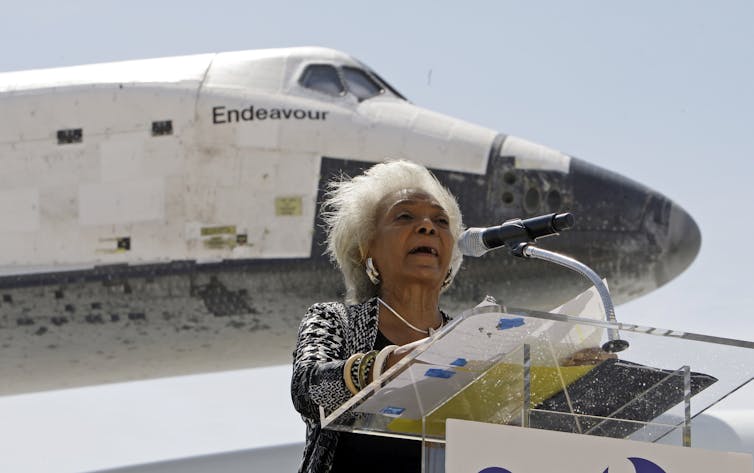
Relentless Advocacy for Inclusion
Her advocacy for inclusion and diversity wasn’t limited to the space program.
As one of the first Black women in a major television role, Nichols understood the importance of opening doors for minorities and women in entertainment.
Nichols continued to push for African Americans to have more power in film and television.
“Until we Blacks and minorities become not only the producers, writers and directors, but the buyers and distributors, we’re not going to change anything,” she told Ebony in 1985 . “Until we become industry, until we control media or at least have enough say, we will always be the chauffeurs and tap dancers.”
Matthew Delmont , Sherman Fairchild Distinguished Professor of History, Dartmouth College
This article is republished from The Conversation under a Creative Commons license. Read the original article .
By The Conversation
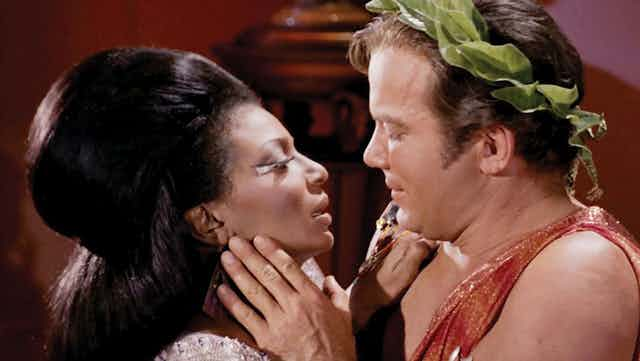
50 years after Star Trek’s ‘kiss’, how have attitudes towards interethnic marriage changed?
Senior Lecturer In Psychology, Brunel University London
Disclosure statement
Stanley Gaines does not work for, consult, own shares in or receive funding from any company or organisation that would benefit from this article, and has disclosed no relevant affiliations beyond their academic appointment.
Brunel University London provides funding as a member of The Conversation UK.
View all partners
In the long-running sci-fi serial Star Trek, the mission of the crew of the starship USS Enterprise is to “ boldly go where no one has gone before ”. This was most often apparent in the crew’s discovery of new worlds and new beings in the course of the drama.
But the series pushed another new boundary 50 years ago when, having been subjected to “sadistic” mind control by aliens, Captain James Kirk (played by William Shatner) and Lieutenant Nyota Uhura (played by Nichelle Nichols) were compelled to passionately kiss each other . With Shatner a Canadian-born actor of European descent and Nichols an American-born actress of African descent, this became one of the earliest, and by far the most watched, scripted interracial kiss on US television. While the kiss is tame by today’s standards, in 1968 it was certainly somewhere few men or women in US television had gone before.
Read more: An Interracial Kiss – on Another Planet
The kiss occurred at a time when only a minuscule proportion of couples within the US married across racial or other ethnic boundaries. Estimates vary, but according to a 2017 Pew Research Centre report fewer than 3% of US marriages were interethnic in 1968 – just one year after the US Supreme Court had struck down the existing anti-miscegenation state laws against mixed relationships as unconstitutional in the Loving vs Virgina case . By contrast, in 2015 (the most recent year for which detailed statistics are available) around 10% of US marriages were interethnic, fuelled largely by newlyweds: 17% of all new US marriages were mixed marriages.
The change in the proportion of interethnic marriages in the US during the past 50 years is striking, although this still implies that around 90% of individuals continue to marry within their ethnic group. This is driven mostly by the tendency of non-Hispanic, European-descent individuals to marry among their own.
Read more: TV's first interracial kiss launched a lifelong career in activism
In the Pew Research Centre report , authors Gretchen Livingston and Anna Brown credit the rise in interethnic marriage with a corresponding change in public attitudes across time. For example, as recently as 1990, a staggering 63% of those not of African descent expressed disapproval towards the idea of a family members’ marriage to someone of African descent. By 2016, that rate had tumbled to 14%.
For comparison, this rate of disapproval was substantially higher than the same perspective from the other side, that of non-white people disapproving of their family members marrying someone of a white background, which stood at 4%. Among those of Asian or Hispanic descent, the same disapproving view of intermarriage stood at around 9%.
So if the rise in interethnic marriage has led to a decrease in negativity among public attitudes toward interethnic marriage over the last two generations, can we also link this increasing interethnicity to increasingly positive attitudes on that topic? A recent addition to attitude surveys is the question of whether interethnic marriage is good for US society, and according to the report the news seems favourable. The proportion of respondents saying that interethnic marriage is a good thing for US society rose from 24% in 2010 to 39% in 2017. For comparison, around 9% said that interethnic marriage was bad for US society, and 52% said that interethnic marriage made no difference.
I believe that the authors were correct to identify the rise of interethnic marriage as having contributed to a decrease in negative attitudes, and increase in positive attitudes. But I also believe that, as Gordon Allport predicted in The Nature of Prejudice , in 1954, it is necessary for government officials to lead the way in their words and deeds if interethnic couples are to be able to marry safely in the US. Civil rights-era shows such as Star Trek in 1968, alongside movies such as Guess Who’s Coming To Dinner in 1967, both mirrored and helped contribute to changing public attitudes in their own way.
Has the “Trump effect” made a difference to attitudes? Based partly on trends I noticed while writing Identity and Interethnic Marriage in the United States, I suspect that some racists have felt increasingly emboldened in stating their opposition to interethnic marriage, especially towards couples comprised of black men and white women. Yet among the 70% of Americans who are not Trump supporters, the rise in interethnic marriage will not be a subject of major concern (and, in fact, the rate will continue to rise).
There is no comparable data to that from the Pew Research Centre that covers the UK, but as the political fallout over Brexit continues I would speculate that the UK has its own issues to address. For example, what will be the fate of marriages between EU residents and UK citizens once Brexit is fully implemented? Nevertheless, I would suppose that interethnic marriages in the UK will continue to rise as young people (in particular) increasingly marry without limiting themselves to “traditional” ethnic boundaries.
In any event, on either side of the Atlantic, 50 years and two generations on from “the kiss”, we can see how far we have progressed – and how far we still have to go.
- US politics
- Racial issues
- Race relations
- Racial diversity
- Interracial marriage

Quantitative Analyst

Director of STEM

Community member - Training Delivery and Development Committee (Volunteer part-time)

Chief Executive Officer

Head of Evidence to Action
- Police, court and fires
- Urgent information
- Local sports
- Letters to the editor
- Engagements
- Anniversaries
- Welcome to Our World
- In The Schools
- Younger set
- Classifieds
- Garage Sales
- Submit News
- Statement of Values
- Terms of Service
- Browse Notices
- Place Notice

- Today's Paper
Subscribe Today
The story behind ‘star trek’ actress nichelle nichols’ iconic interracial kiss.
THE CONVERSATION — On a 1968 episode of “Star Trek,” Nichelle Nichols, playing Lt. Uhura, locked lips with William Shatner’s Capt. Kirk in what’s widely thought to be the first kiss between a Black woman and white man on American television.
The episode’s plot is bizarre: Aliens who worship the Greek philosopher Plato use telekinetic powers to force the Enterprise crew to sing, dance and kiss. At one point, the aliens compel Lt. Uhura and Capt. Kirk to embrace. Each character tries to resist, but eventually Kirk tilts Uhura back and the two kiss as the aliens lasciviously look on.
The smooch is not a romantic one. But in 1968 to show a Black woman kissing a white man was a daring move. The episode aired just one year after the U.S. Supreme Court’s Loving v. Virginia decision struck down state laws against interracial marriage. At the time, Gallup polls showed that fewer than 20% of Americans approved of such relationships.
As a historian of civil rights and media, I’ve been fascinated by the woman at the center of this landmark television moment. Casting Nichols, who died on July 30, 2022, created possibilities for more creative and socially relevant “Star Trek” storylines.
But just as significant is Nichols’ off-screen activism. She leveraged her role on “Star Trek” to become a recruiter for NASA, where she pushed for change in the space program. Her career arc shows how diverse casting on the screen can have a profound impact in the real world, too.
‘A triumph of modern-day TV’
In 1966, “Star Trek” creator Gene Rodenberry decided to cast Nichols to play Lt. Uhura, a translator and communications officer from the United States of Africa. In doing so, he made Nichols the first Black woman to have a continuing co-starring role on television.
The Black press was quick to heap praise on Nichols’ pioneering role.
The Norfolk Journal and Guide hoped that it would “broaden her race’s foothold on the tube.”
The magazine Ebony featured Nichols on its January 1967 cover and described Uhura as “the first Negro astronaut, a triumph of modern-day TV over modern-day NASA.”
Yet the famous kiss between Uhura and Kirk almost never happened.
After the first season of “Star Trek” concluded in 1967, Nichols considered quitting after being offered a role on Broadway. She had started her career as a singer in New York and always dreamed of returning to the Big Apple.
But at an NAACP fundraiser in Los Angeles, she ran into Martin Luther King Jr.
Nichols would later recount their interaction.
“You must not leave,” King told her. “You have opened a door that must not be allowed to close … you changed the face of television forever. … For the first time, the world sees us as we should be seen, as equals, as intelligent people.”
King went on to say that he and his family were fans of the show; she was a “hero” to his children.
With King’s encouragement, Nichols stayed on “Star Trek” for the original series’ full three-year run.
Nichols’ controversial kiss took place at the end of the third season. Nichols recalled that NBC executives closely monitored the filming because they were nervous about how Southern television stations and viewers would react.
After the episode aired, the network did receive an outpouring of letters from viewers — and the majority were positive.
In 1982, Nichols would tell the Baltimore Afro-American that she was amused by the amount of attention the kiss generated, especially because her own heritage was “a blend of races that includes Egyptian, Ethiopian, Moor, Spanish, Welsh, Cherokee Indian and a ‘blond blue-eyed ancestor or two.'”
Space crusader
But Nichols’ legacy would be defined by far more than a kiss.
After NBC canceled Star Trek in 1969, Nichols took minor acting roles on two television series, “Insight” and “The D.A.” She would also play a madam in the 1974 blaxploitation film “Truck Turner.”
She also started to dabble in activism and education. In 1975, Nichols established Women in Motion Inc. and won several government contracts to produce educational programs related to space and science. By 1977, she had been appointed to the board of directors of the National Space Institute, a civil space advocacy organization.
That year she gave a speech at the Institute’s annual meeting. In it, she critiqued the lack of women and minorities in the astronaut corps, challenging NASA to “come down from your ivory tower of intellectual pursuit, because the next Einstein might have a Black face — and she’s female.”
Several of NASA’s top administrators were in the audience. They invited her to lead an astronaut recruitment program for the new space shuttle program. Soon, she packed her bags and began traveling the country, visiting high schools and colleges, speaking with professional organizations and legislators, and appearing on national television programs such as “Good Morning America.”
“The aim was to find qualified people among women and minorities, then to convince them that the opportunity was real and that it also was a duty, because this was historic,” Nichols told the Baltimore Afro-American in 1979. “I really had this sense of purpose about it myself.”
In her 1994 autobiography, “Beyond Uhura,” Nichols recalled that in the seven months before the recruitment program began, “NASA had received only 1,600 applications, including fewer than 100 from women and 35 from minority candidates.” But by the end of June 1977, “just four months after we assumed our task, 8,400 applications were in, including 1,649 from women (a fifteen-fold increase) and an astounding 1,000 from minorities.”
Nichols’ campaign recruited several trailblazing astronauts, including Sally Ride, the first American woman in space, Guion Bluford, the first African American in space, and Mae Jemison, the first African American woman in space.
Relentless advocacy for inclusion
Her advocacy for inclusion and diversity wasn’t limited to the space program.
As one of the first Black women in a major television role, Nichols understood the importance of opening doors for minorities and women in entertainment.
Nichols continued to push for African Americans to have more power in film and television.
“Until we Blacks and minorities become not only the producers, writers and directors, but the buyers and distributors, we’re not going to change anything,” she told Ebony in 1985. “Until we become industry, until we control media or at least have enough say, we will always be the chauffeurs and tap dancers.”
Today's breaking news and more in your inbox
- Daily Newsletter
- Breaking News
Arts and Culture

Lynn Kibbe and Mountain Top & Provisions selected as Champion of the PA Wilds

Hundreds of ‘Game of Thrones’ props are up for auction

Sonia De Los Santos kicks off return of daytime event series in State College

Ellen Hopkins’ new novel ‘Sync’ is a stirring story of foster care through teens’ eyes

Throwback Thursday: ‘The Cabin in the Woods’ has great creatures

UPMC is again Performance Sponsor for Community Arts Center
Starting at $3.69/week..
- Today's news
- Reviews and deals
- Climate change
- 2024 election
- Newsletters
- Fall allergies
- Health news
- Mental health
- Sexual health
- Family health
- So mini ways
- Unapologetically
- Buying guides
- Labor Day sales
Entertainment
- How to Watch
- My watchlist
- Stock market
- Biden economy
- Personal finance
- Stocks: most active
- Stocks: gainers
- Stocks: losers
- Trending tickers
- World indices
- US Treasury bonds
- Top mutual funds
- Highest open interest
- Highest implied volatility
- Currency converter
- Basic materials
- Communication services
- Consumer cyclical
- Consumer defensive
- Financial services
- Industrials
- Real estate
- Mutual funds
- Credit cards
- Balance transfer cards
- Cash back cards
- Rewards cards
- Travel cards
- Online checking
- High-yield savings
- Money market
- Home equity loan
- Personal loans
- Student loans
- Options pit
- Fantasy football
- Pro Pick 'Em
- College Pick 'Em
- Fantasy baseball
- Fantasy hockey
- Fantasy basketball
- Download the app
- Daily fantasy
- Scores and schedules
- GameChannel
- World Baseball Classic
- Premier League
- CONCACAF League
- Champions League
- Motorsports
- Horse racing
New on Yahoo
- Privacy Dashboard
The story behind 'TV's first interracial kiss' between 'Star Trek's' Nichelle Nichols and William Shatner
'Star Trek' made TV history when it aired an episode where Captain Kirk and Lieutenant Uhura kissed on screen.
The moment is widely regarded as one of American TV's first interracial kisses.
Show executives were worried the kiss would anger Southern TV stations and tried to change the script.
When Captain Kirk and Lieutenant Uhura kissed on screen in 1968, it made TV history.
The kiss between the "Star Trek" characters, played by William Shatner and Nichelle Nichols, is widely regarded as one of American TV's first interracial kisses.
"Star Trek" has left a lauded legacy for featuring a multiracial crew working together to explore space. Nichols, considered a trailblazer for Black actors, was one of the first Black women to star in a major television series. She died on July 30 at 89 years old.
Concerns over the interracial kiss
The episode aired at a time when America was still grappling with racism and civil rights. Just one year prior, the Supreme Court made a landmark civil rights decision in Loving v. Virginia, a case that now protects interracial marriage under the 14th amendment.
Worried the kiss would anger TV stations in the Deep South, NBC executives tried to have Spock, who is half-Vulcan — an extraterrestrial humanoid species in the series — kiss Uhura instead. Shatner insisted they stick with the original script, according to critical race scholar and filmmaker Daniel Bernardi, who wrote the book "Star Trek and History."
Showrunners ended up filming two versions of the scene: one with an on-screen kiss, and one that took place off-screen. But Nichols and Shatner deliberately flubbed lines so the original shot would be used, Nichols said in her autobiography, " Beyond Uhura: Star Trek and Other Memories ."
"The only alternative was to cut out the scene altogether, but that was impossible to do without ruining the entire episode. Finally, the guys in charge relented: 'To hell with it. Let's go with the kiss.' I guess they figured we were going to be canceled in a few months anyway. And so the kiss stayed," Nichols wrote.
A lasting legacy
Despite initial concerns, the episode aired without huge backlash, and has since been ranked by several media outlets as one of the top moments in "Star Trek."
Even Nichols wrote in her book that "for me, the most memorable episode of our last season was 'Plato's Stepchildren,'" as the episode was titled.
The "Star Trek" series has been regaled — and sometimes criticized — for shattering taboos and crossing boundaries of what's deemed acceptable. In a 1966 episode, Lieutenant Uhura and Christine Chapel, played by white actress Majel Barrett, shared a friendly kiss.
More recently in 2016, "Star Trek" revealed that Hikaru Sulu, played by John Cho, is openly gay.
"The whole show was an attempt to say that humanity will reach maturity and wisdom on the day that it begins not just to tolerate, but to take a special delight in differences in ideas and differences in life forms," Gene Roddenberry, the show's creator, said .
Read the original article on Insider
Recommended Stories
Angel reese announces she's out for season with injury, currently has most rebounds in wnba history.
Angel Reese's record-setting rookie season is over two weeks before anyone expected.
Consumer Reports readers say these brands build the best used cars
Consumer Reports' first-ever used car used car reliability rankings included more than 150,000 vehicles and looked at problems like engine trouble, HVAC issues, and more.
Denny Hamlin and Michael Jordan's 23XI Racing one of two teams to not sign NASCAR's new charter agreement
NASCAR's current franchising agreement with its teams expires at the end of the season.
Angels' Ben Joyce comes 0.3 mph short of fastest pitch ever recorded
The Angels flamethrower struck out the Dodgers' Tommy Edman with some ridiculous heat.
Chicago Sky's Diamond DeShields responds to toxic fan after hard foul on Caitlin Clark
An incident involving Cailtin Clark and the Sky got ugly. Again.
The maiden voyage of Blue Origin's massive new rocket won't be for NASA
The world will have to wait a little longer to see Blue Origin's massive New Glenn rocket fly for the first time. The first launch of a new rocket always poses enormous risk, both to the launch vehicle and the payload, and Blue Origin has been racing to get New Glenn ready for launch in a month's time. Blue Origin CEO Dave Limp acknowledged in a post on X that there was still much to do: "Still lots to do but progress," he said.
Saquon Barkley has monster debut as Eagles beat Packers in Brazil
The Eagles got a big win to start the season.
NASCAR: Joey Logano wins playoff opener at Atlanta
Logano got a push from Ryan Blaney to pass Daniel Suarez on a green-white-checker restart.
Baseball Hall of Famer Wade Boggs announces prostate cancer diagnosis
Boggs played 18 seasons in the majors with the Red Sox, Yankees and Rays.
Eagles start off season with terrible Jalen Hurts INT and fumble on shotgun snap
The Eagles had a sloppy start to their new season.
Yahoo Top 10: After Texas' flex and Notre Dame's flop, which teams make the cut?
Week 2 didn't lack for suspense with upsets and drama across the college football landscape. But who has actually proven themselves in the first two weeks?
Burning Man 2024 photos: Dust storms, art installations and the creative community on vibrant display
The festival welcomed tens of thousands of Burners to the desert.
Shohei Ohtani hits 46th home run to match his 46 stolen bases, charging toward 50-50 season
Shohei Ohtani hit his 46th home run of the season, moving him closer to a historic 50-50 performance with 19 games remaining on the Los Angeles Dodgers' schedule.
Why 401 (k) investors ignore 'keep cool' advice when markets tank
401(k) participants keep on selling during market downturns despite being told repeatedly to chill with long-term investments, according to a new report.
The US economy may be on 'thinner' ice than investors think
Investors are increasingly confident the US economy will achieve a "soft landing." That may not be the case, according to one strategist.
Shohei Ohtani hits 45th HR to go with his 46 steals; he has 21 games left for 50-50 season
Can the Dodgers superstar do it?
6 most intriguing NBA teams heading into the season | No Cap Room
Dan Devine is joined by James Herbert from CBS Sports to talk about the 6 teams that they are most curious about heading into the 2024-25 NBA season.
Ford recalls 90,736 vehicles due to engine valve issue
Ford will recall 90,736 vehicles as engine intake valves in the vehicles may break while driving, according to the National Highway Traffic Safety Administration.
What debate? Angel Reese has been incredible, but Caitlin Clark is the WNBA Rookie of the Year
Any honest Rookie of the Year debate is over. The entrenchment isn’t helping anyone.
Dodgers lose stalwart RHP Gavin Stone to shoulder inflammation, then All-Star OF Teoscar Hernández to foot contusion
Gavin Stone, Clayton Kershaw, Yoshinobu Yamamoto, Tyler Glasnow and many more are hurt right now.
- Investigates
- Program Guide
- Studio 5 with Brooke Walker
- KSL Outdoors with Adam Eakle
- KSL Sports Live
- Cozi TV on KSL 5.2
- This TV on KSL 5.3
- Road to Zero Fatalities
- Your Life Your Health
- Unaffordable Utah
- Healthy Mind Matters
- KSL's Quarters for Christmas
- KSLKids.com
- Wednesday's Child
- Out of the Darkness Walk
- Utah State Fair
- 2024 Olympics
- Utah Firewatch
- Jeff Caplan's Minute of News
- General Contest Rules
- Sign Up for a KSL Newsletter
- Download the KSLTV.com App
- Meet Our Team
- As You See It / Submit photos
- KSL Community Calendar

ENTERTAINMENT
The story behind TV’s first iconic interracial kiss on ‘Star Trek’ with Nichelle Nichols
Aug 4, 2022, 4:48 PM | Updated: 4:50 pm
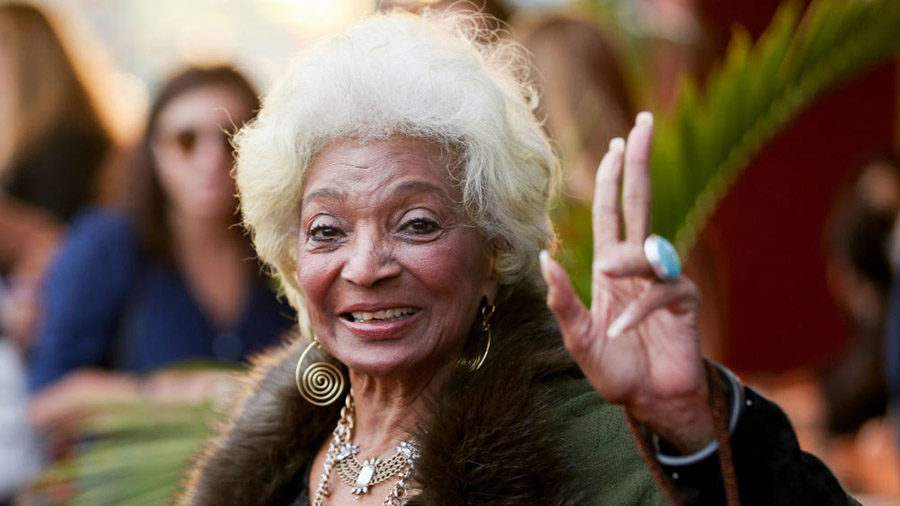
LOS ANGELES, CA - APRIL 04: Actress Nichelle Nichols arrives at the premiere of Neon's "Colossal" at the Vista Theatre on April 4, 2017 in Los Angeles, California. (Photo by Rich Fury/Getty Images)
(Photo by Rich Fury/Getty Images)

BY MATTHEW DELMONT DARTMOUTH COLLEGE
NOTE: The Conversation is an independent and nonprofit source of news, analysis and commentary from academic experts.
(THE CONVERSATION) On a 1968 episode of “Star Trek,” Nichelle Nichols, playing Lt. Uhura, locked lips with William Shatner’s Capt. Kirk in what’s widely thought to be first kiss between a Black woman and white man on American television.
The episode’s plot is bizarre: Aliens who worship the Greek philosopher Plato use telekinetic powers to force the Enterprise crew to sing, dance and kiss. At one point, the aliens compel Lt. Uhura and Capt. Kirk to embrace. Each character tries to resist, but eventually Kirk tilts Uhura back and the two kiss as the aliens lasciviously look on.
We celebrate the life of Nichelle Nichols, Star Trek actor, trailblazer, and role model, who symbolized to so many what was possible. She partnered with us to recruit some of the first women and minority astronauts, and inspired generations to reach for the stars. pic.twitter.com/pmQaKDb5zw — NASA (@NASA) July 31, 2022
The smooch is not a romantic one. But in 1968 to show a Black woman kissing a white man was a daring move. The episode aired just one year after the U.S. Supreme Court’s Loving v. Virginia decision struck down state laws against interracial marriage. At the time, Gallup polls showed that fewer than 20% of Americans approved of such relationships.
As a historian of civil rights and media, I’ve been fascinated by the woman at the center of this landmark television moment. Casting Nichols, who died on July 30, 2022, created possibilities for more creative and socially relevant “Star Trek” storylines.
But just as significant is Nichols’ off-screen activism. She leveraged her role on “Star Trek” to become a recruiter for NASA, where she pushed for change in the space program. Her career arc shows how diverse casting on the screen can have a profound impact in the real world, too.
‘A triumph of modern-day TV’
In 1966, “Star Trek” creator Gene Rodenberry decided to cast Nichols to play Lt. Uhura, a translator and communications officer from the United States of Africa. In doing so, he made Nichols the first Black woman to have a continuing co-starring role on television.
Many actors become stars, but few stars can move a nation. Nichelle Nichols showed us the extraordinary power of Black women and paved the way for a better future for all women in media. Thank you, Nichelle. We will miss you. pic.twitter.com/KhUf4YM6pX — Lynda Carter (@RealLyndaCarter) July 31, 2022
The Black press was quick to heap praise on Nichols’ pioneering role.
The Norfolk Journal and Guide hoped that it would “broaden her race’s foothold on the tube.”
The magazine Ebony featured Nichols on its January 1967 cover and described Uhura as “the first Negro astronaut, a triumph of modern-day TV over modern-day NASA.”
Yet the famous kiss between Uhura and Kirk almost never happened.
After the first season of “Star Trek” concluded in 1967, Nichols considered quitting after being offered a role on Broadway. She had started her career as a singer in New York and always dreamed of returning to the Big Apple.
But at an NAACP fundraiser in Los Angeles, she ran into Martin Luther King Jr.
Nichols would later recount their interaction.
I have been truly moved by the tributes and messages honoring the life and work of Nichelle Nichols, our very own Lieutenant and later Commander Uhura on Star Trek. Although our original series ran only three seasons, we became bonded /1 pic.twitter.com/v1pZtQBU3a — George Takei (@GeorgeTakei) August 2, 2022
“You must not leave,” King told her. “You have opened a door that must not be allowed to close … you changed the face of television forever. … For the first time, the world sees us as we should be seen, as equals, as intelligent people.”
King went on to say that he and his family were fans of the show; she was a “hero” to his children.
With King’s encouragement, Nichols stayed on “Star Trek” for the original series’ full three-year run.
Nichols’ controversial kiss took place at the end of the third season. Nichols recalled that NBC executives closely monitored the filming because they were nervous about how Southern television stations and viewers would react.
After the episode aired, the network did receive an outpouring of letters from viewers – and the majority were positive.
In 1982, Nichols would tell the Baltimore Afro-American that she was amused by the amount of attention the kiss generated, especially because her own heritage was “a blend of races that includes Egyptian, Ethiopian, Moor, Spanish, Welsh, Cherokee Indian and a ‘blond blue-eyed ancestor or two.'”

Space crusader
But Nichols’ legacy would be defined by far more than a kiss.
After NBC canceled Star Trek in 1969, Nichols took minor acting roles on two television series, “Insight” and “The D.A.” She would also play a madam in the 1974 blaxploitation film “Truck Turner.”
"If you can see it, you can be it," the saying goes. Nichelle Nichols gave millions of people the opportunity to see themselves on the frontiers of science and exploration, boldly expanding human understanding. She inspired so many of us to reach for the stars. What a legacy. pic.twitter.com/Ly2IpmxWiJ — Hillary Clinton (@HillaryClinton) August 1, 2022
She also started to dabble in activism and education. In 1975, Nichols established Women in Motion Inc. and won several government contracts to produce educational programs related to space and science. By 1977, she had been appointed to the board of directors of the National Space Institute, a civil space advocacy organization.
That year she gave a speech at the institute’s annual meeting. In it, she critiqued the lack of women and minorities in the astronaut corps, challenging NASA to “come down from your ivory tower of intellectual pursuit, because the next Einstein might have a Black face – and she’s female.”
Several of NASA’s top administrators were in the audience. They invited her to lead an astronaut recruitment program for the new space shuttle program.
Soon, she packed her bags and began traveling the country, visiting high schools and colleges, speaking with professional organizations and legislators, and appearing on national television programs such as “Good Morning America.”
From the Enterprise bridge to the Oval Office — Nichelle Nichols visits President Barack Obama in February 2012. #StarTrek #NichelleNichols pic.twitter.com/pqVYWYVl8w — TrekCore.com 🖖 (@TrekCore) July 31, 2022
“The aim was to find qualified people among women and minorities, then to convince them that the opportunity was real and that it also was a duty, because this was historic,” Nichols told the Baltimore Afro-American in 1979. “I really had this sense of purpose about it myself.”
In her 1994 autobiography, “Beyond Uhura,” Nichols recalled that in the seven months before the recruitment program began, “NASA had received only 1,600 applications, including fewer than 100 from women and 35 from minority candidates.” But by the end of June 1977, “just four months after we assumed our task, 8,400 applications were in, including 1,649 from women (a fifteen-fold increase) and an astounding 1,000 from minorities.”
Nichols’ campaign recruited several trailblazing astronauts, including Sally Ride, the first American woman in space, Guion Bluford, the first African American in space, and Mae Jemison, the first African American woman in space.
Relentless advocacy for inclusion
Her advocacy for inclusion and diversity wasn’t limited to the space program.
As one of the first Black women in a major television role, Nichols understood the importance of opening doors for minorities and women in entertainment. Nichols continued to push for African Americans to have more power in film and television.
Our Uhura is far beyond the stars now. In January 1967, Ebony declared Nichelle Nichols the first Negro astronaut, a triumph of modern day television over modern day NASA. We are here because you were there. May our Queen Rest in Power and Forever Glory 🖖🏽 1932-2022 pic.twitter.com/c8ukMlRdS0 — Prof. Chanda Prescod-Weinstein, Child of Uhura (@IBJIYONGI) July 31, 2022
“Until we Blacks and minorities become not only the producers, writers and directors, but the buyers and distributors, we’re not going to change anything,” she told Ebony in 1985. “Until we become industry, until we control media or at least have enough say, we will always be the chauffeurs and tap dancers.”
This woman was a pioneer. Her significance not only to the world of science fiction but to television as a whole cannot be overstated. Not to mention the mountain of charm and magnetism she brought to the screen. Nichelle Nichols will be greatly missed. pic.twitter.com/o7KPZNoUiL — Seth MacFarlane (@SethMacFarlane) August 1, 2022
This story has been updated from the original version published on April 15, 2021. This article is republished from The Conversation under a Creative Commons license. Read the original article here: https://theconversation.com/the-story-behind-star-trek-actress-nichelle-nichols-iconic-interracial-kiss-188048.
KSL 5 TV Live
Entertainment.
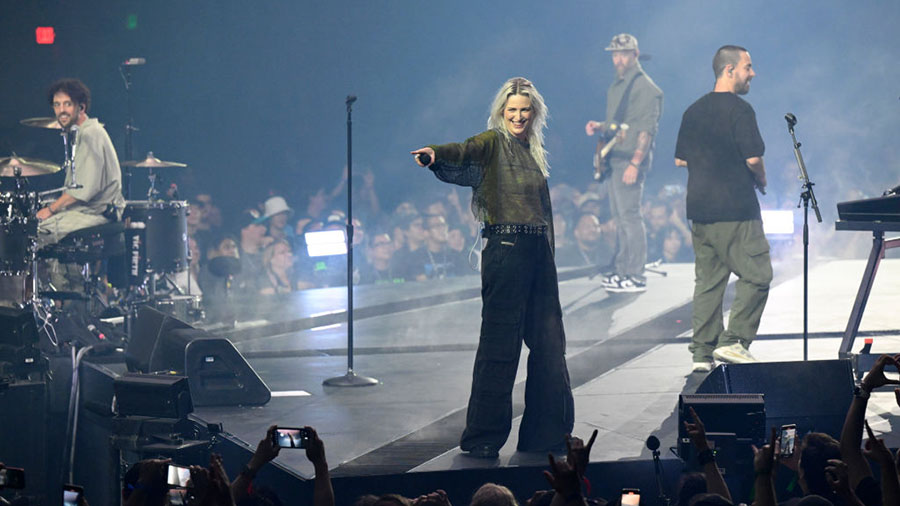
Associated Press
Linkin Park reunite 7 years after Chester Bennington’s death, with new music
Linkin Park is back with a new lineup and debuting their first new music since the 2017 death of lead singer Chester Bennington.

Andrew Adams
Volunteers scramble to preserve sculptures hidden in plain sight in SLC neighborhood
Volunteers this week were busy saving massive sculptures and other artwork from a studio hidden in plain sight.
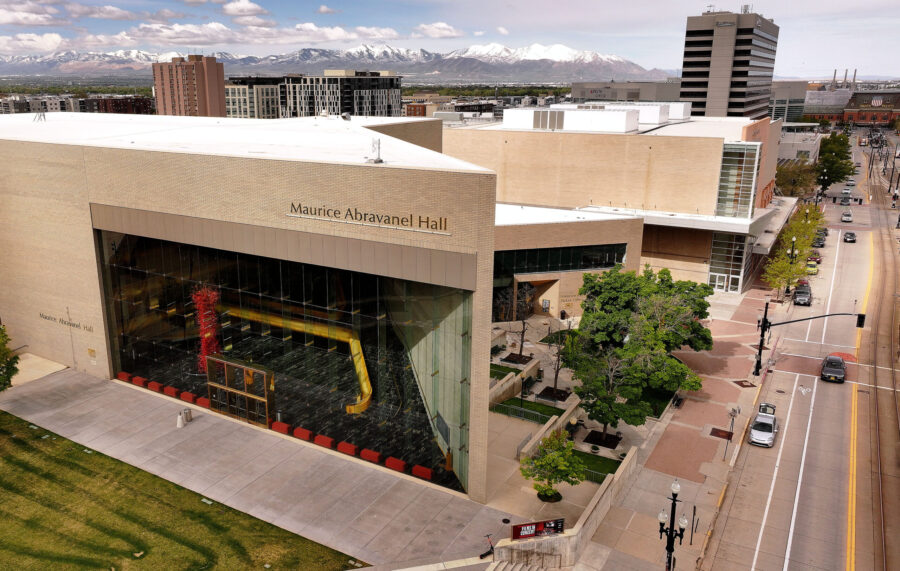
Abravanel Hall could be given national historic recognition. Will it save the venue?
A group led by Utah Symphony musicians put together a draft document outlining why Abravanel Hall, which opened in 1979, should be added to the National Register of Historic Places.
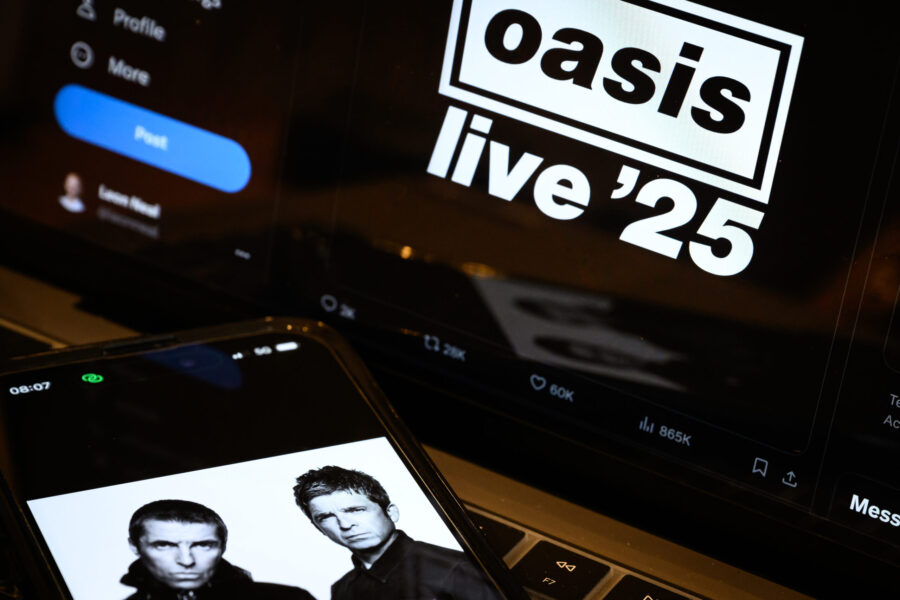
Pan Pylas, Associated Press
Ticketmaster’s pricing for Oasis tickets is under investigation in the UK
The U.K.'s competition watchdog has launched an investigation into the way more than one million tickets were sold for next year's reunion concerts from iconic 1990s Britpop band Oasis.

Queen guitarist Brian May says he had a ‘minor stroke’ but can still play
Brian May, the lead guitarist of British rock band Queen, revealed Wednesday that he had a “minor stroke” last week, which caused him to temporarily lose control over his arm.
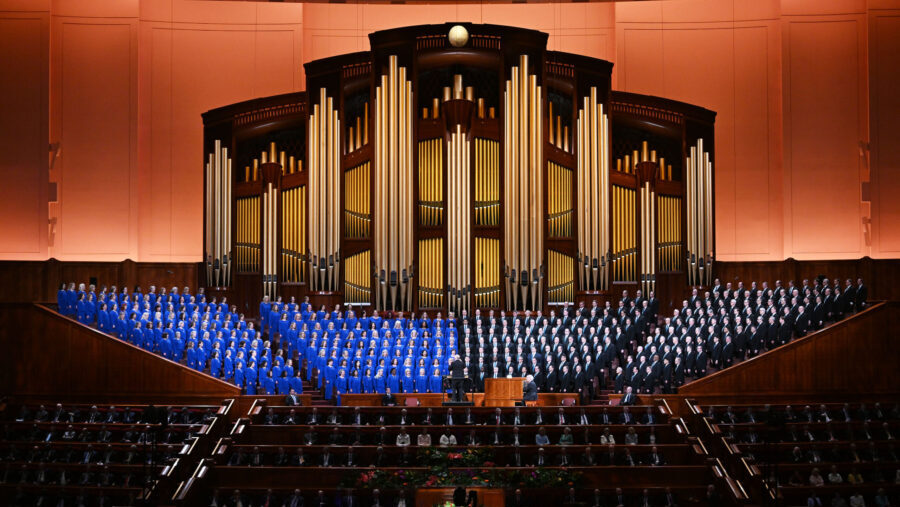
Tabernacle Choir at Temple Square to perform in Georgia next week
The Tabernacle Choir at Temple Square will perform at the Georgia Capitol in Atlanta next week.
Sponsored Articles

How to choose the best laptop for college students
Finding the right laptop for college students can be hard, but with this guide we break down what to look for so you can find the best one.

Unraveling the dilemma between leasing and buying office technology
Carefully weigh these pros and cons to make an informed decision that best suits your business growth and day-to-day operation.

Lighting Design
A room-by-room lighting guide for your home
Bookmark this room-by-room lighting guide whenever you decide to upgrade your lighting or style a new home.

Ballet West
The rising demand for ballet tickets: why they’re harder to get
Ballet West’s box office is experiencing demand they’ve never seen before, leaving many interested patrons unable to secure tickets they want.

Stay cool this summer with ceiling fans
When used correctly, ceiling fans help circulate cool and warm air. They can also help you save on utilities.

5 internet safety tips for kids
Read these tips about internet safety for kids so that your children can use this tool for learning and discovery in positive ways.
- WEATHER ALERT Heat Advisory Full Story
- WEATHER ALERT Excessive Heat Warning Full Story
The 'Star Trek' kiss that broke ground for race relations
In part 2 of our FACEism series, we look at a controversial 1968 episode of "Star Trek" that featured the first interracial kiss on television.

It was a kiss that changed the world. Or at least started to.
It happened on one of the most imaginative shows in history.
While some celebrated the moment. many others hated it.
All because of the color of their skin.
When Captain Kirk kissed Uhura on "Star Trek" in 1968, it was the first kiss between people of different races on television.
"That was shocking," recalls George Takei, who played Lt. Sulu on the groundbreaking sci-fi show. "That was never done on television"
In the video above, Eyewitness News explores the interracial kiss, the outraged reaction and how mixed couples at that time had to fight for their rights simply to love each other.
It's all part of the "FACEism" series that seeks to examine stereotyping and move toward a better understanding of each other.
See part 1 of the FACEism series, on the history of blackface, here.

The FACEism series will continue Tuesday with a report called "Where are you from?"
Related Topics
Top stories.

Raging brush fire in Highland area threatens thousands of homes

Hollywood Bowl cancels concert after losing power amid heat wave

Lions beat Rams in overtime to take season opener, 26-20

Live updates: Brush fire near Highland burns more than 20,000 acres
- 32 minutes ago

Wildfire in Angeles National Forest north of Azusa burns 800 acres
When will SoCal heat wave end? Relief is coming soon
Thousands of Southern Californians lose power during heat wave
Kendrick Lamar will headline the 2025 Super Bowl halftime show
The story behind 'TV's first interracial kiss' between 'Star Trek's' Nichelle Nichols and William Shatner
- 'Star Trek' made TV history when it aired an episode where Captain Kirk and Lieutenant Uhura kissed on screen.
- The moment is widely regarded as one of American TV's first interracial kisses.
- Show executives were worried the kiss would anger Southern TV stations and tried to change the script.

When Captain Kirk and Lieutenant Uhura kissed on screen in 1968, it made TV history.
The kiss between the "Star Trek" characters, played by William Shatner and Nichelle Nichols, is widely regarded as one of American TV's first interracial kisses.
"Star Trek" has left a lauded legacy for featuring a multiracial crew working together to explore space. Nichols, considered a trailblazer for Black actors, was one of the first Black women to star in a major television series. She died on July 30 at 89 years old.
Concerns over the interracial kiss
The episode aired at a time when America was still grappling with racism and civil rights. Just one year prior, the Supreme Court made a landmark civil rights decision in Loving v. Virginia, a case that now protects interracial marriage under the 14th amendment.
Worried the kiss would anger TV stations in the Deep South, NBC executives tried to have Spock, who is half-Vulcan — an extraterrestrial humanoid species in the series — kiss Uhura instead. Shatner insisted they stick with the original script, according to critical race scholar and filmmaker Daniel Bernardi, who wrote the book "Star Trek and History."
Showrunners ended up filming two versions of the scene: one with an on-screen kiss, and one that took place off-screen. But Nichols and Shatner deliberately flubbed lines so the original shot would be used, Nichols said in her autobiography, " Beyond Uhura: Star Trek and Other Memories ."
Related stories
"The only alternative was to cut out the scene altogether, but that was impossible to do without ruining the entire episode. Finally, the guys in charge relented: 'To hell with it. Let's go with the kiss.' I guess they figured we were going to be canceled in a few months anyway. And so the kiss stayed," Nichols wrote.
A lasting legacy
Despite initial concerns, the episode aired without huge backlash, and has since been ranked by several media outlets as one of the top moments in "Star Trek."
Even Nichols wrote in her book that "for me, the most memorable episode of our last season was 'Plato's Stepchildren,'" as the episode was titled.
The "Star Trek" series has been regaled — and sometimes criticized — for shattering taboos and crossing boundaries of what's deemed acceptable. In a 1966 episode, Lieutenant Uhura and Christine Chapel, played by white actress Majel Barrett, shared a friendly kiss.
More recently in 2016, "Star Trek" revealed that Hikaru Sulu, played by John Cho, is openly gay.
"The whole show was an attempt to say that humanity will reach maturity and wisdom on the day that it begins not just to tolerate, but to take a special delight in differences in ideas and differences in life forms," Gene Roddenberry, the show's creator, said .
- Main content
The Definitive Voice of Entertainment News
Subscribe for full access to The Hollywood Reporter
site categories
Hollywood flashback: ‘star trek’ showed tv’s first interracial kiss in 1968.
Nichelle Nichols says NBC execs originally wanted to shoot two different versions of the scene between her and William Shatner locked lips to avoid outrage among Southern affiliates, but "Bill was deliberately trying to flub it up."
By Bill Higgins
Bill Higgins
- Share on Facebook
- Share to Flipboard
- Send an Email
- Show additional share options
- Share on LinkedIn
- Share on Pinterest
- Share on Reddit
- Share on Tumblr
- Share on Whats App
- Print the Article
- Post a Comment

A story of prohibited interracial marriage, Loving set Cannes abuzz this month. But in 1968, Star Trek boldly took mixed-race kissing where U.S. TV had never gone before, with an episode in which Captain Kirk (William Shatner ) planted one on Lieutenant Uhura ( Nichelle Nichols).
Where Loving ‘s plot is relatively simple (white guy falls in love with black woman, they marry in 1958 Virginia, all hell breaks loose), Kirk and Uhura must pass through some galactically convoluted plot points before their lips meet. The Enterprise finds a planet inhabited by aliens who are followers of Plato and have developed psychokinetic powers. The crew gives them medical care, and the Platonites insist they stay. When Kirk declines, the aliens mess with their minds and force Kirk and Uhura to smooch against their will. (This is all done in dramatic Star Trek -style, with Uhura saying things like, “I’m so frightened, Captain! I’m so very frightened.”)
Related Stories
Amid 'star wars' saturation, where can 'star trek' go next.
There were reasons for the cast to be nervous about this TV first — the show was in its third season, and cancellation was imminent. But it was NBC that was reluctant to pull the trigger. Network execs were worried the interracial scene would upset Southern affiliates, so an effort was made to shoot coverage where Kirk and Uhura don’t actually lock lips. “We did a few takes, but Bill was deliberately trying to flub it,” recalls Nichols. “At one point, he even crossed his eyes to make me laugh.”
Eventually, the network gave up trying and ran the scene as written. And with an eye toward the Emmys and stirring up controversy, producers took out an ad in The Hollywood Reporter asking none too subtly if TV’s first interracial smooch was about to actually happen. Because of the kiss, “Plato’s Stepchildren” became such a famous Star Trek episode that when Comedy Central roasted Shatner in 2006, Nichols got a huge laugh when she said to him, “Let’s make TV history again — and you can kiss my black ass!”
This story first appeared in the June 3 issue of The Hollywood Reporter magazine. To receive the magazine, click here to subscribe .
THR Newsletters
Sign up for THR news straight to your inbox every day
More from The Hollywood Reporter
Cma awards: beyoncé snubbed; morgan wallen, post malone earn multiple nominations, antonique smith and rev yearwood launch nonprofit to mobilize black communities on climate vote, hollywood bowl cancels sunday night’s vance joy concert due to a power outage, robert de niro warns democrats not to become complacent ahead of election: “it ain’t over till it’s over”, kendrick lamar to headline 2025 apple music super bowl lix halftime show, ll cool j on the challenges of finding the “right balance” between his acting and music careers.
Old News, Vintage Photos & Nostalgic Stories
William shatner explains how ‘star trek’ almost didn’t air the historic interracial kiss.
- Entertainment
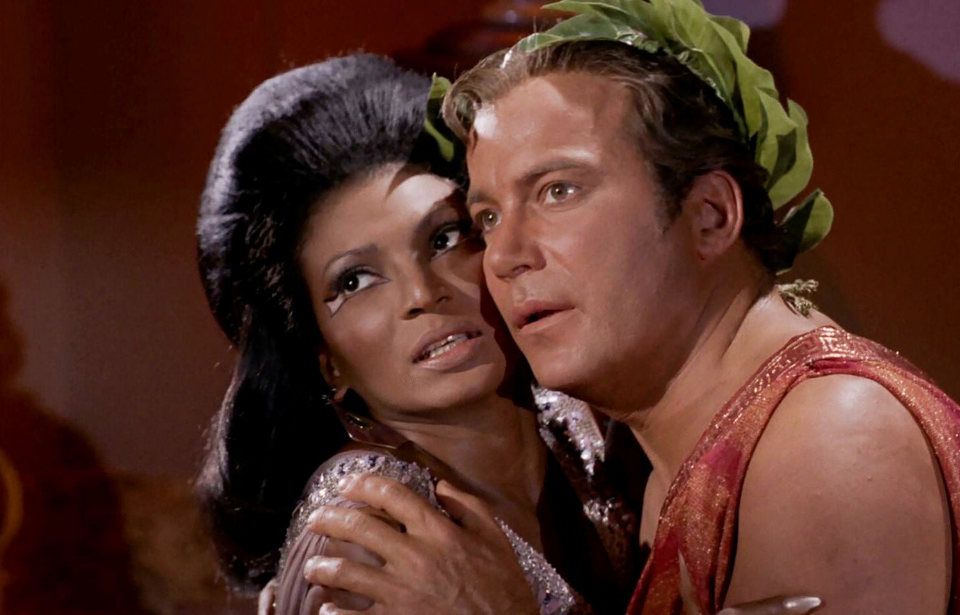
Captain Kirk is actor William Shatner ‘s most recognizable and iconic role played throughout his seven-decade career. In StarTrek , he starred alongside Nichelle Nichols , who played Lieutenant Uhura, and the pair shared one of the greatest moments in television history: one of the first interracial kisses aired on American television. The episode was titled “Plato’s Stepchildren,” but in a recent interview , Shatner explained how the kiss almost didn’t happen.
The network didn’t want it
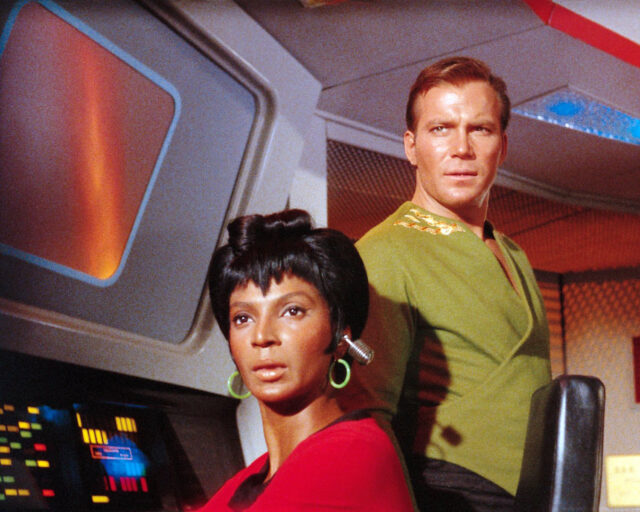
At the time of filming for the episode, struggles with racism and civil rights were rampant in America, so the network was concerned about the interracial kiss. Specifically, they worried that the kiss would upset television stations in the Deep South, and they didn’t want to turn off their conservative audience down there. As such, they tried to come up with a different solution.
They suggested having Spock, the half-Vulcan character in the series, kiss Uhura instead of Kirk. However, Shatner insisted that the production stick with the original script. As they continued filming, Shatner and Nichols were told to use a technique that saw their heads turn away from the camera, suggesting that they were kissing but not actually locking lips. That wasn’t going to work for the two actors.
Shatner and Nichols were sneaky about it
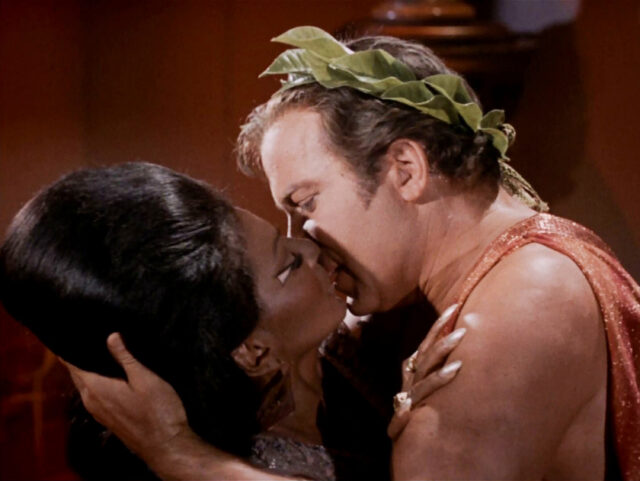
When it came to filming the scene, the network opted to have two versions of the same scene: one where the kiss took place on-screen and another where it was assumed to have taken place off-screen. While Shatner and Nichols participated in the latter version of the episode, they deliberately messed up their lines so that that version of the scene was unusable.
In her autobiography, Beyond Uhura: Star Trek and Other Memories , Nichols explained that “The only alternative was to cut out the scene altogether, but that was impossible to do without ruining the entire episode. Finally, the guys in charge relented: ‘To hell with it. Let’s go with the kiss.’ I guess they figured we were going to be canceled in a few months anyway. And so the kiss stayed.”
The episode went down in history
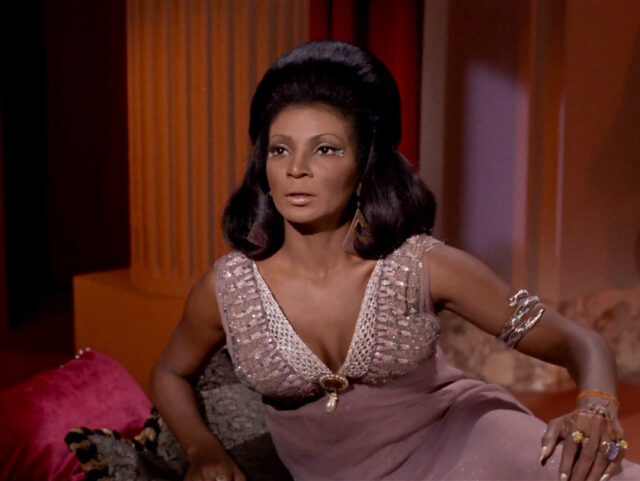
The Star Trek episode, including the interracial kiss, first aired on November 22, 1968. It made history, becoming what most believe to be one of the first interracial kisses aired on American television. Despite the concerns of the network, the episode was not met with much backlash. However, decades later, Shatner was asked if the scene would have happened if not for his insistence, to which he replied, “It would have not got done.”
More from us: 8 Movies That Aren’t Considered ‘Scary’ but Still Scare the Crap Out of Us
Star Trek was already applauded by audiences for its multiracial crew that worked together to explore space. It is no surprise then that it served as the series to feature Nichols as one of the first black women to star in a major television series. She died on July 30, 2022, at the age of 89 years old. Shatner, discussing the kiss, said that she was a beautiful woman “in her lifetime.”
Ready to go on a timeless adventure? Subscribe to The Vintage Newsletter now! Join us in exploring the captivating tapestry of history, where every click reveals a new chapter in the story of humanity. Don’t just read history – experience it firsthand. Sign up today and let the past come alive in your inbox!

Fake History Hunter
Not the first interracial kiss on tv.
It is often said that the first interracial kiss on TV was the (involuntary) kiss between Captain James Tiberius Kirk (William Shatner) and translator and communications officer Nyota Uhura (Nichelle Nichols) in the Star Trek episode “Plato’s Stepchildren” that was broadcast on the 22nd of November 1968 at ten PM in the evening.
This is not the case. Sorry Captain Kirk, I guess you don’t like seeing my tweets correcting that myth showing up on Twitter a lot, or maybe it was me suggesting we’d ask the writers of the show if they meant it to be political or not…

Maybe he also just doesn’t like being reminded of the fact that the Star Trek kiss wasn’t the first interracial kiss, even though he mentioned it in his autobiography ‘Up Till Now’.

For clarity we’ll first have to agree on what ‘interracial’ means because some people, especially in the USA, sometimes think that the word interracial only refers to a black and white person, which is incorrect. So to be as factual as possible, I will use the dictionary definition;

So it involves two people of different ‘races’, not just black & white. How we define ‘races’ is more complicated and differs per culture it seems, it is after all a social construct and one that changes over time as cultures change. And how things are seen in one country can be judged differently in another. You’ll find this discussed elsewhere in the article as well.
Interestingly enough there were other interracial kisses in Star Trek that predate the famous one, like Uhura kissing Nurse Chapel in episode; ‘What are little girls made of’ and Kirk kissed Filipino BarBara Luna and French-Vietnamese France Nuyen while Sulu kisses Uhura her neck in earlier episodes.

But besides this, there had been other interracial kisses on TV before the kiss between Kirk and Uhura. Theirs was not the first interracial kiss on TV, it was not even the first interracial kiss on US TV and it was not even the first interracial kiss between humans on Star Trek.
There are of course also different kinds of kisses, when is a kiss just a kiss, does a peck on the cheek count or does it have to be mouth to mouth? I think all kisses matter if we want to find out which one was the first but we must obviously keep in mind that passionate kisses have more value than platonic ones, in more ways than one.
The real first interracial kiss on TV, be it global, be it just in the US, is still heavily debated. But at this moment there are a few contenders that all pre-date the Kirk-Uhura kiss.
In 1951 Lucille Ball (European ancestry) and Desi Arnaz (Cuban-American) kissed on screen in the TV-show ‘I love Lucy’. Yes, this is a controversial contender, some people claim that their marriage was not interracial. CBS management at the time was adamantly opposed to having Lucy married to a Cuban, especially one with such a strong accent, he was “too ethnic”. According to Kathleen Brady’s book “ Lucille: The Life of Lucille Ball “, the sponsor Philip Morris cigarettes, also protested, they said that the American public would not accept Desi as the husband of a “red-blooded American girl”. By law Desi was technically white and their marriage wasn’t a problem in that respect, but on an immigration document from 1939 his race is described as Cuban while on his military personnel file he’s described as white . Today the US census would describe Desi as a white male of Cuban ancestry but some people still consider Desi & Lucy an interracial couple today. And just like the kiss in Star Trek, seeing people of different backgrounds like Desi & Lucy in TV was very important to countless people watching these shows who themselves where in mixed marriages or the result of one. So technically they may not have been an interracial couple but they’re often brought up when this subject is discussed so I felt the article would be incomplete without at least mentioning it. I’ll leave it up to you to decide if their kiss counts.
One interesting side note here is that the production company Desilu Productions, founded by Desi and Lucy, was involved in developing and producing the Star Trek franchise up to the second season and thus made the episode with the kiss between Uhura and Kirk possible.
Either way, even if we decide not to accept this kiss as being interracial (enough), there are other contenders that were all broadcast before the infamous Star Trek episode.
Another contender interestingly enough also involves William Shatner! On the 16th of November 1958 at 7pm the cast of the stage play ‘ The World of Suzie Wong ‘ performed a scene on the Ed Sullivan Show. The scene ends with William Shatner and France Nuyen kissing each other on the mouth, something that interestingly doesn’t appear in Mr. Shatner’s autobiography. You can watch the full episode by clicking ‘ here .
Another White/Asian interracial kiss on US TV Nobu McCarthy and Lloyd Bridges in the episode ‘Proof of Guilt’ of the show ‘Sea Hunt’, broadcast on the 16th of August 1959 at 9pm. You can watch the full episode by clicking here .
The first White/Black interracial kiss on US TV I could find was between Joan Crawford and the host Sammy Davis Junior during the 17th Primetime Emmy Awards , broadcast at 10pm on the 12th of September 1965. Crawford was there to receive the award for Lynn Fontanne and Alfred Lunt and she made sure to give Davis a peck on the cheek, yes, just a peck, but it was a kiss, between a black man and a white woman, on American TV and between two stars. You can see the clip with sound by clicking here.
Two years later Sammy Davis Junior shared a kiss again, this time in a TV special called ‘Movin’ with Nancy’ with Nancy Sinatra which was broadcast on the 11th of December 1967. You can watch the full video by clicking here .
But outside of the USA there had been interracial kisses on TV as well.
In the UK in soap opera Emergency – Ward 10 an interracial kiss was exchanged between John White and Joan Hooley and broadcast at 19:30 ( prime time ) on the 21st of July 1964 (the kiss was censored in an earlier broadcast because it was filmed in a bedroom so a new version was shot where the kiss took place outdoors, more about that here .) Although it was a clearly passionate kiss and likely the first time a white man kissed a black woman on TV anywhere, it was also not the first interracial kiss on television.
On June 5th 1962 a show called ‘ You in your small corner ‘ which was broadcast on ITV, it too showed an interracial kiss between actors Lloyd Reckord and Elizabeth MacLennan , this one is also sometimes credited as being the first interracial kiss on TV but wasn’t.
Another runner-up goes to a show called ITV’s “ (ABC) Armchair Theatre “, an adaptation of Ted Willis’s play Hot Summer Night, which was broadcast on the 1st of February 1959 at 9.35PM ( prime time ). In this episode there was a passionate, non-forced, romantic interracial kiss between actors Lloyd Reckord and Andrée Melly .

Another close contender for first interracial kiss between a black and light skinned person on television anywhere was broadcast a month earlier, on the 5th of January 1959, at about 20:30 ( prime time) when there was a kiss between actors Donald Jones and Roekie Aronds in the episode ‘ Beeldromance ‘ in the Dutch TV show ‘ Pension Hommeles ‘, one of my countries most popular programs ever, at a time when there were only 100.000 tv sets in the Netherlands. Yet somehow everybody saw it as people would visit the neighbours in their street who had a set and watch it together. Dutch newspapers of the time suggest there was no controversy or backlash as a result of the kiss, quite the opposite, reviews were positive. Although the kiss was not as passionate as some of the other contenders, it clearly was romantic and more than just an innocent peck. It would have been problematic on American television. You can watch the complete episode by clicking here .
However, the first interracial televised kiss I could find, not counting the ones on ‘I love Lucy, that was also the first kiss between a black and white person, was broadcast on December 15th 1955 at 7:30PM in the evening ( prime time and pre Watershed) in a televised production of Shakespeare’s play ‘Othello’, with actors Gordon Heath and Rosemary Harris . There were several kisses in the broadcast, including passionate mouth to mouth ones, you can watch the full recording by clicking here .

So which kiss we can consider to be the first interracial kiss on television depends on how we personally or culturally define interracial and if we think some of these kisses count or not. The main contenders currently are;
- (1951, ‘I love Lucy’, Lucille Ball and Desi Arnaz.)
- 1955, ‘Othello’, Gordon Heath and Rosemary Harris.
- 1958, ‘Ed Sullivan Show’, William Shatner and France Nuyen.
- 1959, ”Pension Hommeles’, Donald Jones and Roekie Aronds
- 1959, ‘ABC’s Armchair Theatre’, Lloyd Reckord and Andrée Melly.
If we don’t count ‘I love Lucy’, the current first interracial kiss and the first kiss between a black and a white person that was also a meaningful kiss, a passionate one, was broadcast on BBC’s ‘Othello’ in 1955, almost 13 years before the kiss on Star Trek.
On a side note; the Star Trek kiss also didn’t cause much of a stir at the time, it barely got any (negative) attention at all. Negative between brackets because it did get positive attention, besides the huge cultural impact it had then and still has, the show did get fan mail especially because of this episode. And we can’t underestimate the influence it had on many viewers, there is a reason this kiss has been remembered and praised for such a long time and it not being the first one doesn’t take that away. It inspired countless people and for many black Americans it was the first time they even saw a positive role model that looked like them who had an important function, was a hero, was tough, cool and who inspired. We should not underestimate the huge importance of the show and that kiss to a lot of people. And of course it shall always be the first kiss between a black woman and a white man in space on tv.
The episode was taken off the air in some places but that was mostly because of some of the rather violent scenes, not the kiss.
Some people may think that correcting the Star Trek first kiss myth is devaluing this important television moment, taking away from a milestone by being pedantic. Of course I am just trying to make sure historical facts are being truthfully presented but I also feel that by ignoring earlier kisses we are devaluing those historical milestones. Although we can’t really compare the situation in 1960s America and 1950s Britain when it comes to race relations it was still a huge deal in the UK as well when a black man kissed a white woman. History was being made and these occasions should also be properly be represented. The Star Trek kiss was absolutely important and became more important after the fact, it had a big impact on many people, it mattered. Although, as some people rightly point out, the kiss was forced, under duress, without consent, which in some ways takes away from it’s value, but it still was important. But by only telling only one story you ignore another, one that deserves to be told. Credit where credit’s due.
Special mention: The first passionate interracial kiss that was also a same-sex kiss broadcast on TV that I could find was the one between Willie Jonah and Rayner Bourton in an episode of ‘BBC2 Playhouse’ titled ‘The Mind Beyond: The Man with the Power’ , broadcast on BBC 2 on November 3, 1976, you can watch it by clicking here .
Hollywood achieved the milestone of showing an interracial kiss long before television did. The oldest interracial kiss on the Silver Screen I could find was when a white man played by Gilbert M. Anderson kissed a black woman, probably the wonderful Bertha Regustus, as far back as 1903 in Edison short ‘ What happened in the tunnel ‘ – 1903;
Of course it is a peck, but nevertheless it is a kiss and earlier than other contenders such as A Florida Enchantment (1914) (women in drag and ‘blackface’), The Greatest Thing in Life (1918) (Interracial Same-Sex Kiss), Island in the Sun (1957) (not much of a kiss, if any), A Patch of Blue (1965) (first black man kissing a white woman in a movie) or The Ωmega Man (1971) . You can watch the full film by clicking here .
You may also be interested in reading the article about the claims made about the first same sex kisses on TV that you can read by clicking here.
- Was I Love Lucy ahead of it’s time? by Raj Tawney
- Lucille: The Life of Lucille Ball by Kathleen Brady
- TV Schedule 1968
- Complete ‘Pension Hommeles’ episode ‘Beeldromance’
- Fade to Black and White: Interracial Images in Popular Culture (Perspectives on a Multiracial America), by Erica Chito Childs
- Black in the British Frame, by Stephen Bourne
- Othello, IMDB page
- BBC Radio Times 1955
If you enjoy my writing check out my book!

If you like my work, please consider supporting me on Patreon ;

Disclaimer; Picture(s) found online, used for (re-)educational purposes only. I do not own the copyrights to these images, I only share them here for educational purposes to try and make sure the real story behind it becomes known and people will stop spreading false information. If the copyright owner objects to the sharing here, kindly contact me and I shall alter the article. If you’re interested in using any of the images here get in touch with the copyright owners mentioned in the article. Feel free to contact me with questions.

Share this:
14 thoughts on “ not the first interracial kiss on tv ”.
The UK series was ‘ABC Armchair Theatre’, made by ABC Weekend TV (no relation to ABC in the US) in the UK and shown on the UK’s ITV network. Kinda like if WXXX had a drama anthology show that happened to be networked by CBS: it’d be “WXXX Armchair Theatre” rather than “CBS Armchair Theatre”.
Nevertheless, *thank you* for setting this myth to rights yet again. It won’t work, but we must all keep trying!
I think you mean the first male same sex kiss regarding LA Law. You earlier mention Uhura and Nurse Chapel, which was clearly before 1991.
- Pingback: NOT the first same sex kiss on TV – Fake History Hunter
I adore your site (I’ve done a lot of debunking of fake historical things online myself) but just one tiny thing you might want to change in this article is that Desi was Hispanic, not Latin. (Having been married to a man whose parents made a somewhat dramatic escape from Castro’s Cuba, in 1961, I learned a lot about that whole culture.)
Latin, Latina, Latino, and Latinx are most correctly used to refer to people from Latin America (i.e., South and Central America.) Cubans (and Spain-Spanish, sorry for the awkward phrasing) are always referred to as Hispanic. (And the prestige of being “pure-blooded” Spanish was strong in Cuba! Even the dictator Batista wasn’t allowed to join a certain country club/beach club because his ancestry was mixed. (It seems very likely Desi was as well, but none of that matters.) As you might guess, my former mother-in-law was one of those who valued her prestigious ancestors.)
Anyway, since Hispanic just means one descended at least partially from Spanish people and who speaks Spanish, most Latinx people are Hispanic, but not all Hispanic peoplel are Latinx. /Pedantics end.
Like Liked by 1 person
Just to point out, on the issue of “race”. Lucy and Desi Arnaz’s marriage was legal, I believe, throughout the US. There were several states, however, where a marriage between Shatner and Nichols, or Sinatra and Davis, would have been illegal, and where their marriage in another state would not have been recognized. This appalling reality lasted until 1973, I believe. I hope this sheds light on the pecularities of what “interracial” meant in the US at the time.
From everything I’ve seen the proud Latinos dislike the “Latinx” descriptor because they see it as politicizing their ethnicity, rightly so, thanks to the only real people who have issues with Latina/o are race or sex hustlers that create drama out of obscure things that really aren’t dramatic and use that drama to create an audience of people who will pay for their livelihoods.
- Pingback: No, Kirk and Uhura didn’t share the first interracial kiss on television | Jerz's Literacy Weblog (est. 1999)
All I know is that I had never seen a white man kiss a black woman. At first they didn’t want to even air this in the South. I was about 9 at the time. For me it was the first. Asians at time were not treated like black people were in the south. Desi was Cuban, when did that became a race. Sammy was a self proclaim Jew and had the Rat Pack pass.
You’re missing Killer’s Kiss 1954 by Stanley Kubrick. It’s a great kissing example by Frank Silvera & Irene Kane
When was it first broadcast on TV?
Do you / does anyone have alternative sources for the images and links that are now not available? (PS. Great article!)
Which ones? They’re all working for me.
ah yes – it was a glitch on my computer
- Pingback: Elon Musk Seems to Have Completely Missed the Point of "Star Trek"
Leave a comment Cancel reply

- Already have a WordPress.com account? Log in now.
- Subscribe Subscribed
- Copy shortlink
- Report this content
- View post in Reader
- Manage subscriptions
- Collapse this bar

6 Obscure Facts About the Original ‘Star Trek’ Series
T rekkies rejoice, the day is finally here! Sept. 8 celebrates Star Trek Day as it marks the anniversary of when the original series premiered on television in 1966. The very first episode was called “The Man Trap” and now over 50 years later, the love for Star Trek has never wavered and the original series’ success prompted tons of additional series, movies, merch, and more. To join in on the fun, let’s talk about some interesting facts about Star Trek: The Original Series .
1 There was originally a very different pilot episode
At first, there was a pilot episode called “The Cage” that didn’t feature the famed Captain Kirk but a Captain Pike. Spock did appear but ultimately NBC turned down the pilot. The show was able to get a second chance and history was forever changed.
2 Nichelle Nichols made history on the show
Nichelle Nichols played Lieutenant Nyota Uhura and was one of the first Black women to play a major role in a TV show. Her kiss with William Shatner also changed history as one of the very first interracial kisses on television.
3 Lucille Ball saved the show
Desilu Productions, owned by Lucille Ball and Desi Arnaz , financed Star Trek . At one point, the show was almost canceled but Ball believed the show would be a success and convinced everyone else to continue to back it.
4 Leonard Nimoy answered fan mail as Spock
People would write to Nimoy as Spock and ask questions or ask for advice. One notable exchange was by a teenage girl who asked for advice on how to deal with prejudice she faced because she was biracial. He wrote back, “[Spock] said to himself: ‘Not everyone will like me. But there will be those who will accept me just for who I am.’”
5 Can you think of Sulu’s first name?
If you’re racking your brain right now, you can stop because Sulu actually never had a first name in the original series. Later on in Star Trek VI , the first name of Hikaru was introduced.
6 The show has broken tons of Guinness World Records
One of the most interesting Guinness World Records is that the fictional language in Star Trek called Klingon holds the record for the “most widely spoken fictional language.” Now tell us, how many words in Klingon do you know?
Happy Star Trek Day! How will you celebrate this evening?
Adam Nimoy details his struggles with his father, Leonard and his drug addiction.

- Скидки дня
- Справка и помощь
- Адрес доставки Идет загрузка... Ошибка: повторите попытку ОК
- Продажи
- Список отслеживания Развернуть список отслеживаемых товаров Идет загрузка... Войдите в систему , чтобы просмотреть свои сведения о пользователе
- Краткий обзор
- Недавно просмотренные
- Ставки/предложения
- Список отслеживания
- История покупок
- Купить опять
- Объявления о товарах
- Сохраненные запросы поиска
- Сохраненные продавцы
- Сообщения
- Развернуть корзину Идет загрузка... Произошла ошибка. Чтобы узнать подробнее, посмотрите корзину.
Oops! Looks like we're having trouble connecting to our server.
Refresh your browser window to try again.
Related Searches
- star trek search for spock
- star trek trading cards 1991
- 2009 star trek
- star trek adventures
- star trek borg
- star trek tcg
- star trek comics
- star trek search for spock dvd
- star trek trivia
- star trek tng trading cards
- star trek stamps
- hasbro star trek
- star trek cartoon
- star trek novel
- stamps star trek
Advertisement
1 taylor swift and travis kelce kiss video from the us open had fans swooning, share this article.
It’s been quite a few days for Travis Kelce and Taylor Swift, who have been all over New York City having a blast this past weekend.
After she attended the first Kansas City Chiefs game of the season, the pair was spotted out on dates and then headed to the 2024 US Open men’s final , where the cheered, sang along to I Believe in a Thing Called Love , and kissed a few times, which of course had fans swooning.
PHOTOS: See the best shots from Taylor and Travis at the US Open
There was one fan video of them having a moment, and that’s where we’ll focus our energy. Click below to look at that sweet moment, along with some reaction:
TRAVIS AND TAYLOR AT US OPEN OH MY GOSH THE WAY THEY LOOK AT EACH OTHER 😩 pic.twitter.com/7ZDiwRxiOQ — 🍸 (@discopiigs) September 8, 2024
the way travis looked at her and slowly went for the kiss and taylor smiling back OMG pic.twitter.com/XwqXh7vOja — anália (@analiaogs) September 9, 2024
https://twitter.com/JackTomo7139/status/1832891689301844183
More Taylor Swift
Taylor swift and travis kelce wonderfully belted out a song together at the us open men's final, fans were convinced travis kelce was watching nfl on his phone while at the us open with taylor swift, 9 adorable photos of taylor swift and travis kelce at the us open men's final.

Taylor Swift and Travis Kelce looked so fashionable walking into the US Open men's final

Taylor Swift and Travis Kelce recreate their first public kiss photo on Chariah Gordon's Instagram

Taylor Swift and Mecole Hardman's fiancée Chariah Gordon delivered the best postgame 'interview' after Chiefs win
Most popular, angel reese shocked the wnba world by announcing that her rookie season is over, who is jannik sinner's girlfriend meet fellow tennis star anna kalinskaya, fans loved caitlin clark's classy response to news of angel reese's season-ending injury, nfl week 1 announcers: the complete list of sunday's lineup in 2024, nfl fans thought it was hilarious that russell wilson dressed in full pads despite being inactive for the steelers, the bengals kept an icky tradition alive, the falcons falcons-ed and 10 things we learned in the nfl's week 1.
Please enter an email address.
Thanks for signing up.
Please check your email for a confirmation.
Something went wrong.

IMAGES
VIDEO
COMMENTS
Kirk and Uhura's kiss
'Star Trek's' interracial kiss 50 years ago boldly went where ...
Fifty Years Ago, "Star Trek" Aired TV's First Interracial Kiss
Star Trek and the kiss that changed TV. When Nichelle Nichols was thinking of leaving Star Trek, Martin Luther King persuaded her to stay, saying that her role sent a positive message to African ...
Season 3 Episode 10Production No. #067Episode: "Plato's Stepchildren"The Enterprise answers a distress call from Platonius, a planet populated by a small gro...
The Story Behind 'Star Trek' Actress Nichelle Nichols' Iconic Interracial Kiss The smooch was not a romantic one. But, in 1968, to show a Black woman kissing a white man was a daring move.
Star Trek's groundbreaking interracial kiss between Kirk and Uhura was 50 years ago today - how have public attitudes to interracial and interethnic relationships changed in the years since?
The interracial kiss between William Shatner and Nichelle Nichols on "Star Trek" 50 years ago was a cultural phenomenon that changed television.
THE CONVERSATION — On a 1968 episode of "Star Trek," Nichelle Nichols, playing Lt. Uhura, locked lips with William Shatner's Capt. Kirk in what's widely thought to be the first kiss ...
The kiss between the "Star Trek" characters, played by William Shatner and Nichelle Nichols, is widely regarded as one of American TV's first interracial kisses.
The Star Trek episode, including the interracial kiss, first aired on November 22, 1968. It made history, becoming what most believe to be one of the first interracial kisses aired on American ...
The "Star Trek" kiss scene between Capt. Kirk and Lt. Uhura turns 50 this year.Learn more about this story at https://www.newsy.com/85545/Find more videos li...
Star Trek caused controversy in 1960s America by having a black actress in a major role, for the creators though, this made them want to take things even fur...
NOTE: The Conversation is an independent and nonprofit source of news, analysis and commentary from academic experts. (THE CONVERSATION) On a 1968 episode of "Star Trek," Nichelle Nichols, playing Lt. Uhura, locked lips with William Shatner's Capt. Kirk in what's widely thought to be first kiss between a Black woman and white man on American television.
When Captain Kirk kissed Uhura on "Star Trek" in 1968, it was the first kiss between people of different races on television. "That was shocking," recalls George Takei, who played Lt. Sulu on the ...
The kiss between the "Star Trek" characters, played by William Shatner and Nichelle Nichols, is widely regarded as one of American TV's first interracial kisses. "Star Trek" has left a lauded ...
CBS via Getty Images. A story of prohibited interracial marriage, Loving set Cannes abuzz this month. But in 1968, Star Trek boldly took mixed-race kissing where U.S. TV had never gone before ...
The Star Trek episode, including the interracial kiss, first aired on November 22, 1968. It made history, becoming what most believe to be one of the first interracial kisses aired on American television. Despite the concerns of the network, the episode was not met with much backlash. ... Star Trek was already applauded by audiences for its ...
"Star Trek's" actual first interracial kiss happened in 1967. In the first season episode, " Space Seed ," Mexican superstar Ricardo Montalban kissed white actress Madlyn Rhue .
TV's first interracial kiss!Episode title: "Plato's Stepchildren"Season 3, Episode 10Air Date; November 22, 1968On an urgent medical emergency Kirk, Spock an...
Plato's Stepchildren
It is often said that the first interracial kiss on TV was the (involuntary) kiss between Captain James Tiberius Kirk (William Shatner) and translator and communications officer Nyota Uhura (Nichelle Nichols) in the Star Trek episode "Plato's Stepchildren" that was broadcast on the 22nd of November 1968 at ten PM in the evening. This is….
Sept. 8 celebrates Star Trek Day as it marks the anniversary of when the original ... Season 3, Episode 67, 'Plato's Stepchildren.' The first interracial kiss on TV, November 22, 1968 ...
It's been widely stated that the Star Trek episode "Plato's Stepchildren", airing on 22 November 1968, had "the very first televised interracial kiss", which was between Kirk (William Shatner) and Uhura (Nichelle Nichols).For instance, the Huffington Post said (empahsis mine):. Nichols stayed with "Star Trek," and it's a good thing she did — otherwise she may not have had a chance to ...
Find many great new & used options and get the best deals for STAR TREK 5 CARD STARLOG MAGAZINE SUBSCRIPTION OFFER SET KIRK/SPOCK/BONES 1993 at the best online prices at eBay! Free shipping for many products! ... 1998 KISS 50 CARD SET JOHNNY LIGHTNING TOY CAR INSERTS READ (#134600918651) i***g (63) - Feedback left by buyer. Past year.
Here's video of the kiss between the boyfriend and girlfriend at the 2024 US Open as Taylor Swift and Travis Kelce watched the final. ... Meet fellow tennis star Anna Kalinskaya. Tennis. 1 day.